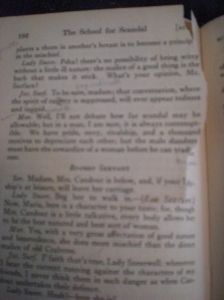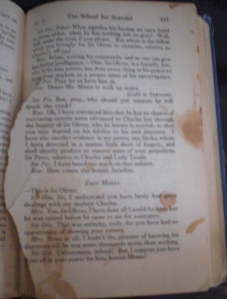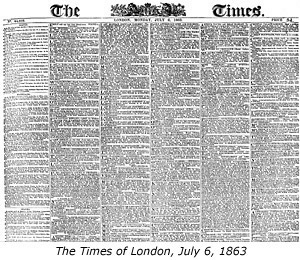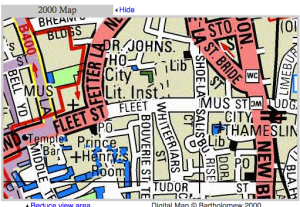After failing to find any marginalia in the first few books I looked through, which were based upon my original database query, I happened upon The Plays of Richard Brinsley Sheridan. The book was written by Richard Brinsley Sheridan, who was a playwright and politician, among other things. He wrote them in the late 18th century, so I hoped for some insight from those students who had come before me, likely while studying English literature.
The book itself seems to have been repaired, and the title and authors’ name on the spine of the book was handwritten. Inside, It was heavily marked, albeit in pencil, which unfortunately indicated that the traces cannot be accurately dated. If the traces had been added with pen, it would be possible to ascertain more information about who had written them. There were many passages simply underlined, while there were also several pages where the traces consisted of comments about the text.
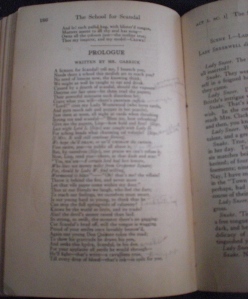 The student who provided the marginalia on this page sought to understand the vocabulary that Sheridan used. Enough was written after the line, “Crave what you will–there’s quantum sufficit”. “Sal volatile” was underlined and smelling salts was written by the student, while “hydra” led to snake, and positive was jotted in the margin after a line containing “poz”.
The student who provided the marginalia on this page sought to understand the vocabulary that Sheridan used. Enough was written after the line, “Crave what you will–there’s quantum sufficit”. “Sal volatile” was underlined and smelling salts was written by the student, while “hydra” led to snake, and positive was jotted in the margin after a line containing “poz”.
When viewing another page, the same theme is found, with slight variations. The student used the margins to define words in the text, and also bracketed certain paragraphs as well, always in pencil. “Insipid” led to weak, and “raillery” was defined as gay ridicule. Of course, the connotation of the word gay was quite different when the student had written these notes. Raillery is defined today as good-humored teasing, so I’m not sure the students’ inclusion of ridicule fits best.
Finally, I discovered that pencil was not the only marking implement found inside this book. Whether it was coffee, wine, blood, or something else entirely, there are about eight to ten pages that have some unfortunate staining. Just as I’m writing this today with the aid of a cup of coffee (at a safe distance from the book itself), a student from the past had done something similar, without as much luck.
